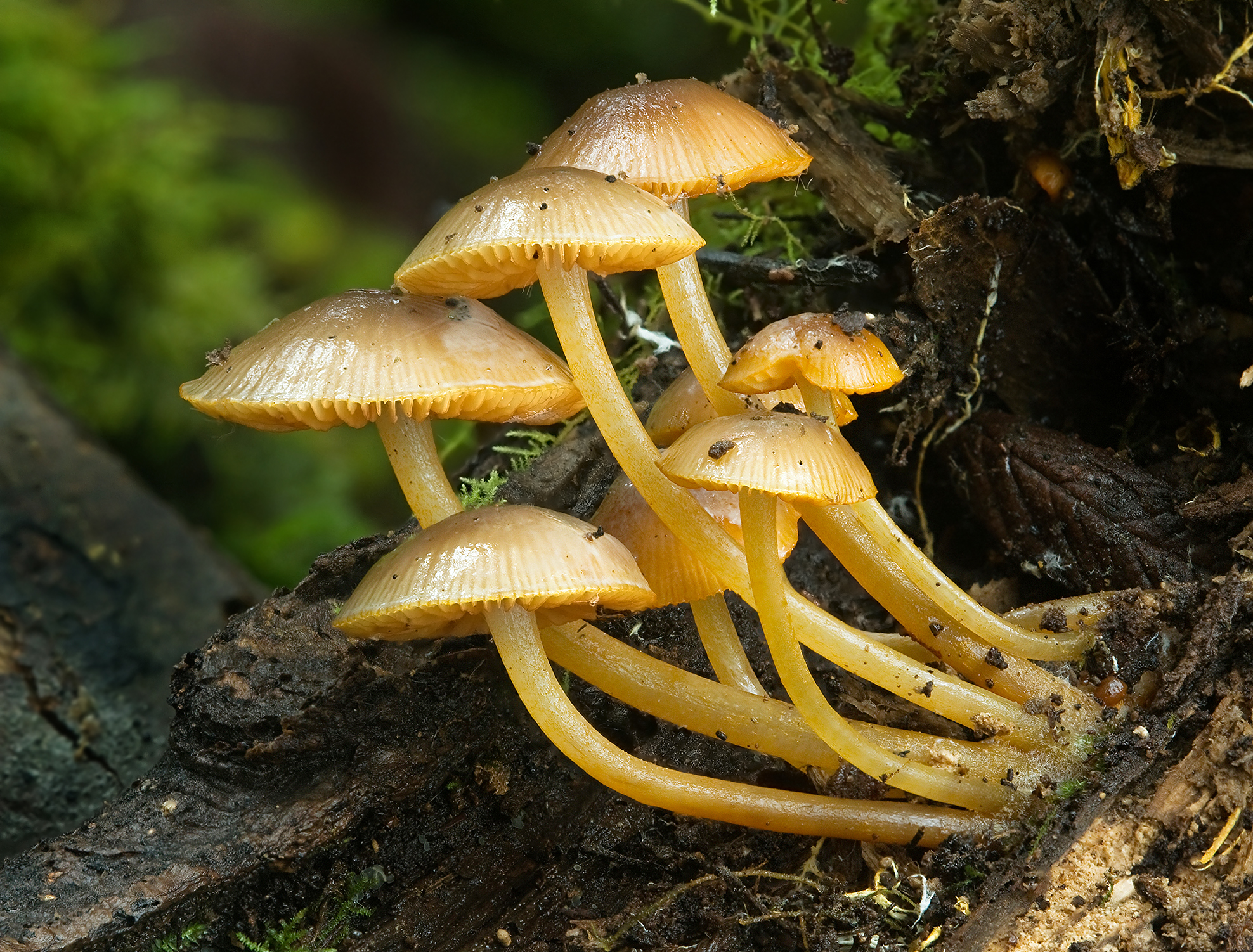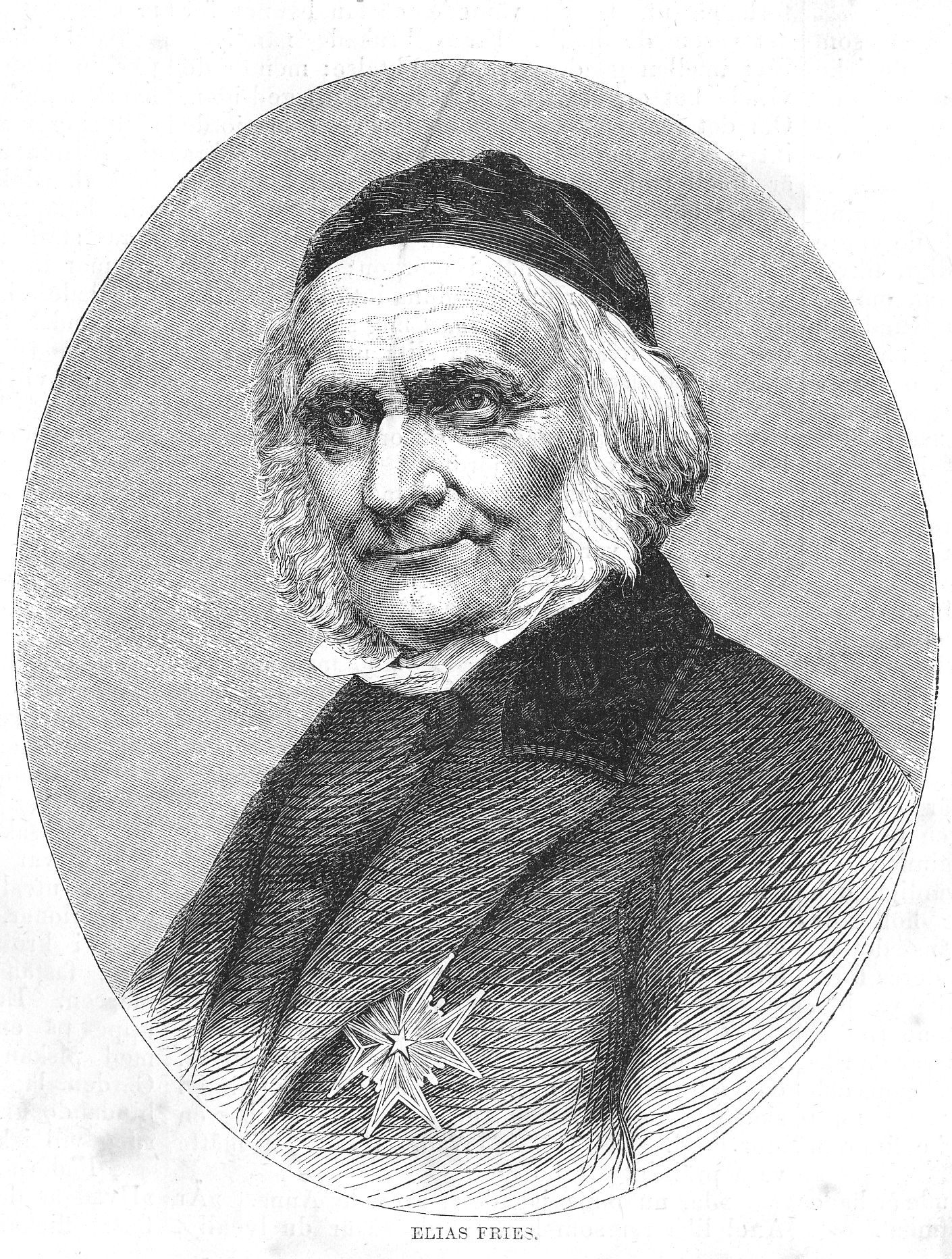|
Mycology
Mycology is the branch of biology concerned with the study of fungus, fungi, including their Taxonomy (biology), taxonomy, genetics, biochemistry, biochemical properties, and ethnomycology, use by humans. Fungi can be a source of tinder, Edible mushroom, food, traditional medicine, as well as entheogens, poison, and fungal infection, infection. Yeasts are among the most heavily utilized members of the fungus kingdom, particularly in food manufacturing. Mycology branches into the field of phytopathology, the study of plant diseases. The two disciplines are closely related, because the vast majority of plant pathogens are fungi. A biologist specializing in mycology is called a mycologist. Overview The word ''mycology'' comes from the Greek language, Ancient Greek: wikt:μύκης, μύκης (''mukēs''), meaning "fungus" and the suffix (''-logia''), meaning "study." Pioneer mycologists included Elias Magnus Fries, Christiaan Hendrik Persoon, Heinrich Anton de Bary, Elizabeth E ... [...More Info...] [...Related Items...] OR: [Wikipedia] [Google] [Baidu] [Amazon] |
Fungus
A fungus (: fungi , , , or ; or funguses) is any member of the group of eukaryotic organisms that includes microorganisms such as yeasts and mold (fungus), molds, as well as the more familiar mushrooms. These organisms are classified as one of the kingdom (biology)#Six kingdoms (1998), traditional eukaryotic kingdoms, along with Animalia, Plantae, and either Protista or Protozoa and Chromista. A characteristic that places fungi in a different kingdom from plants, bacteria, and some protists is chitin in their cell walls. Fungi, like animals, are heterotrophs; they acquire their food by absorbing dissolved molecules, typically by secreting digestive enzymes into their environment. Fungi do not photosynthesize. Growth is their means of motility, mobility, except for spores (a few of which are flagellated), which may travel through the air or water. Fungi are the principal decomposers in ecological systems. These and other differences place fungi in a single group of related o ... [...More Info...] [...Related Items...] OR: [Wikipedia] [Google] [Baidu] [Amazon] |
Elias Magnus Fries
Elias Magnus Fries (15 August 1794 – 8 February 1878) was a Swedish mycologist and botanist. He is sometimes called the Mycology, "Linnaeus of Mycology". In his works he described and assigned botanical names to hundreds of fungus and lichen species, many of which remain authoritative today. Career Fries was born at Femsjö (Hylte Municipality), Småland, the son of the pastor there. He attended school in Växjö. He acquired an extensive knowledge of flowering plants from his father. In 1811 Fries entered Lund University where he studied under Carl Adolph Agardh and Anders Jahan Retzius. He obtained his doctorate in 1814. In the same year he was appointed an associate professorship in botany. Fries edited several exsiccata series, the first starting in 1818 under the title ''Lichenes Sveciae exsiccati, curante Elia Fries'' and the last together with Franz Joseph Lagger under the title ''Hieracia europaea exsiccata''. He was elected a member of the Royal Swedish Academ ... [...More Info...] [...Related Items...] OR: [Wikipedia] [Google] [Baidu] [Amazon] |
Lewis David De Schweinitz
Lewis David de Schweinitz (13 February 1780 – 8 February 1834) was a German-American botanist and mycologist from Bethlehem, Pennsylvania. Considered the "Father of North American Mycology," he also made significant contributions to botany. Education Born in Bethlehem, Pennsylvania, a great-grandson of Count Nikolaus Ludwig von Zinzendorf und Pottendorf, founder and patron of the Moravian Church, in 1787 Schweinitz was placed in the institution of the Moravian community at Nazareth, Pennsylvania, where he remained for eleven years and was a successful and industrious student. Schweinitz later entered the Theological seminary at Niesky (Saxony) in 1798. In 1805, he published the ''Conspectus Fungorum in Lusatiae'' in collaboration with his teacher, Professor Johannes Baptista von Albertini. Early career In 1807 he went to Gnadenberg (in Silesia), then subsequently to Gnadau to work as a preacher in the Moravian Church. A work appointment in the United States led him on ... [...More Info...] [...Related Items...] OR: [Wikipedia] [Google] [Baidu] [Amazon] |
Pier Andrea Saccardo
Pier Andrea Saccardo (23 April 1845 in Treviso, Province of Treviso, Treviso – 12 February 1920 in Padua, Italy, Padua) was an Italian botany, botanist and mycology, mycologist. His multi-volume ''Sylloge Fungorum'' was one of the first attempts to produce a comprehensive list of identified fungi, using their spore-bearing structures for classification. He was elected to the Linnean Society of London, Linnean Society in 1916 as a foreign member. He also authored a color classification system that he called ''Chromotaxia'' and contributed to the Italian translation of Charles Darwin's Insectivorous Plants. Life Saccardo was born in the wine growing region of Selva di Montello to Elena Vidotto and engineer Francesco di Selva. He studied at gymnasium of the Venice seminary, the Lyceum in Venice, and then at the Technical Institute of the University of Padua from 1864. At the age of fourteen, he had already put together a herbarium and had made collections of the insects of Trevis ... [...More Info...] [...Related Items...] OR: [Wikipedia] [Google] [Baidu] [Amazon] |
Yeast
Yeasts are eukaryotic, single-celled microorganisms classified as members of the fungus kingdom (biology), kingdom. The first yeast originated hundreds of millions of years ago, and at least 1,500 species are currently recognized. They are estimated to constitute 1% of all described fungal species. Some yeast species have the ability to develop multicellular characteristics by forming strings of connected budding cells known as pseudohyphae or false hyphae, or quickly evolve into a Multicellular organism, multicellular cluster with specialised Organelle, cell organelles function. Yeast sizes vary greatly, depending on species and environment, typically measuring 3–4 micrometre, μm in diameter, although some yeasts can grow to 40 μm in size. Most yeasts reproduce asexual reproduction, asexually by mitosis, and many do so by the asymmetric division process known as budding. With their single-celled growth habit, yeasts can be contrasted with Mold (fungus), molds, wh ... [...More Info...] [...Related Items...] OR: [Wikipedia] [Google] [Baidu] [Amazon] |
Fungal Infection
Fungal infection, also known as mycosis, is a disease caused by fungi. Different types are traditionally divided according to the part of the body affected: superficial, subcutaneous, and systemic. Superficial fungal infections include common tinea of the skin, such as tinea of the body, groin, hands, feet and beard, and yeast infections such as pityriasis versicolor. Subcutaneous types include eumycetoma and chromoblastomycosis, which generally affect tissues in and beneath the skin. Systemic fungal infections are more serious and include cryptococcosis, histoplasmosis, pneumocystis pneumonia, aspergillosis and mucormycosis. Signs and symptoms range widely. There is usually a rash with superficial infection. Fungal infection within the skin or under the skin may present with a lump and skin changes. Pneumonia-like symptoms or meningitis may occur with a deeper or systemic infection. Fungi are everywhere, but only some cause disease. Fungal infection occurs after spor ... [...More Info...] [...Related Items...] OR: [Wikipedia] [Google] [Baidu] [Amazon] |
Beatrix Potter
Helen Beatrix Heelis (; 28 July 186622 December 1943), usually known as Beatrix Potter ( ), was an English writer, illustrator, natural scientist, and conservationist. She is best known for her children's books featuring animals, such as '' The Tale of Peter Rabbit'', which was her first commercially published work in 1902. Her books, including '' The Tale of Jemima Puddle Duck'' and '' The Tale of Tom Kitten'', have sold more than 250 million copies. An entrepreneur, Potter was a pioneer of character merchandising. In 1903, Peter Rabbit was the first fictional character to be made into a patented stuffed toy, making him the oldest licensed character. Born into an upper-middle-class household, Potter was educated by governesses and grew up isolated from other children. She had numerous pets and spent holidays in Scotland and the Lake District, developing a love of landscape, flora and fauna, all of which she closely observed and painted. Potter's study and watercolours of ... [...More Info...] [...Related Items...] OR: [Wikipedia] [Google] [Baidu] [Amazon] |
Christiaan Hendrik Persoon
Christiaan Hendrik Persoon (31 December 1761 – 16 November 1836) was a Cape Colony mycologist who is recognized as one of the founders of mycology, mycological Taxonomy (biology), taxonomy. Early life Persoon was born in Cape Colony at the Cape of Good Hope, the third child of an immigrant Pomeranian father, Christiaan Daniel Persoon, and Netherlands, Dutch mother, Wilhelmina Elizabeth Groenwald. His mother died soon after he was born. In 1775, at the age of thirteen, he was sent to Europe for his education. His father died a year later in 1776. Education Initially a student of theology at University of Halle-Wittenberg, Halle, Persoon switched his studies to medicine, which he pursued in Leiden and then Göttingen. He received a doctorate from the German National Academy of Sciences Leopoldina, Deutsche Akademie der Naturforscher in Erlangen 1799. Later years He moved to Paris by 1803, where he spent the rest of his life, renting the upper floor of a house in a poor ... [...More Info...] [...Related Items...] OR: [Wikipedia] [Google] [Baidu] [Amazon] |
Binomial Nomenclature
In taxonomy, binomial nomenclature ("two-term naming system"), also called binary nomenclature, is a formal system of naming species of living things by giving each a name composed of two parts, both of which use Latin grammatical forms, although they can be based on words from other languages. Such a name is called a binomial name (often shortened to just "binomial"), a binomen, name, or a scientific name; more informally, it is also called a Latin name. In the International Code of Zoological Nomenclature (ICZN), the system is also called nomenclature, with an "n" before the "al" in "binominal", which is a typographic error, meaning "two-name naming system". The first part of the name – the '' generic name'' – identifies the genus to which the species belongs, whereas the second part – the specific name or specific epithet – distinguishes the species within the genus. For example, modern humans belong to the genus ''Homo'' and within this genus to the species ''Hom ... [...More Info...] [...Related Items...] OR: [Wikipedia] [Google] [Baidu] [Amazon] |
Genetic Fingerprinting
DNA profiling (also called DNA fingerprinting and genetic fingerprinting) is the process of determining an individual's deoxyribonucleic acid (DNA) characteristics. DNA analysis intended to identify a species, rather than an individual, is called DNA barcoding. DNA profiling is a forensic technique in criminal investigations, comparing criminal suspects' profiles to DNA evidence so as to assess the likelihood of their involvement in the crime. It is also used in paternity testing, to establish immigration eligibility, and in genealogical and medical research. DNA profiling has also been used in the study of animal and plant populations in the fields of zoology, botany, and agriculture. Background Starting in the mid 1970s, scientific advances allowed the use of DNA as a material for the identification of an individual. The first patent covering the direct use of DNA variation for forensicsUS5593832A was filed by Jeffrey Glassberg in 1983, based upon work he had done while ... [...More Info...] [...Related Items...] OR: [Wikipedia] [Google] [Baidu] [Amazon] |




